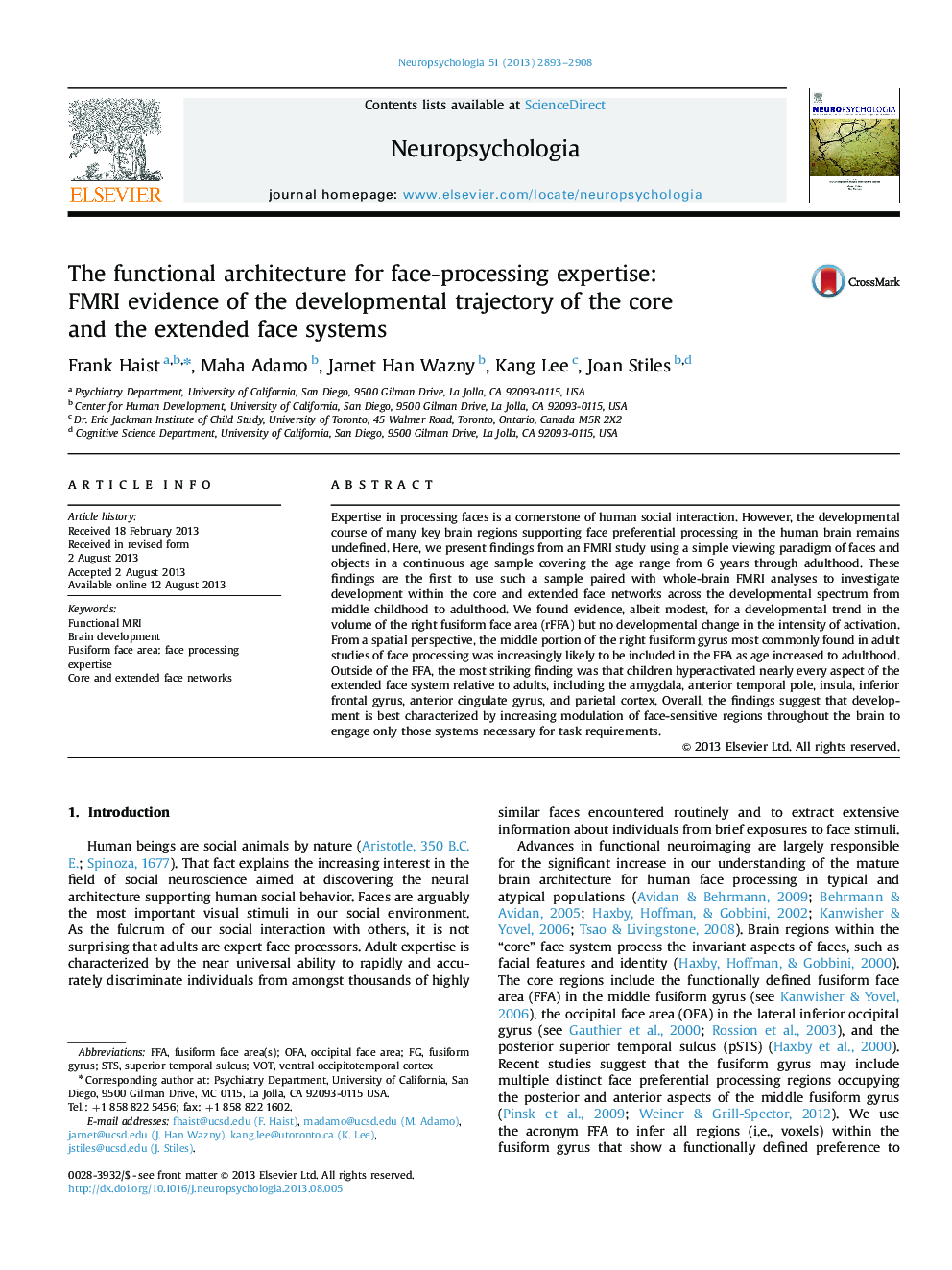| Article ID | Journal | Published Year | Pages | File Type |
|---|---|---|---|---|
| 10464749 | Neuropsychologia | 2013 | 16 Pages |
Abstract
Expertise in processing faces is a cornerstone of human social interaction. However, the developmental course of many key brain regions supporting face preferential processing in the human brain remains undefined. Here, we present findings from an FMRI study using a simple viewing paradigm of faces and objects in a continuous age sample covering the age range from 6 years through adulthood. These findings are the first to use such a sample paired with whole-brain FMRI analyses to investigate development within the core and extended face networks across the developmental spectrum from middle childhood to adulthood. We found evidence, albeit modest, for a developmental trend in the volume of the right fusiform face area (rFFA) but no developmental change in the intensity of activation. From a spatial perspective, the middle portion of the right fusiform gyrus most commonly found in adult studies of face processing was increasingly likely to be included in the FFA as age increased to adulthood. Outside of the FFA, the most striking finding was that children hyperactivated nearly every aspect of the extended face system relative to adults, including the amygdala, anterior temporal pole, insula, inferior frontal gyrus, anterior cingulate gyrus, and parietal cortex. Overall, the findings suggest that development is best characterized by increasing modulation of face-sensitive regions throughout the brain to engage only those systems necessary for task requirements.
Keywords
Related Topics
Life Sciences
Neuroscience
Behavioral Neuroscience
Authors
Frank Haist, Maha Adamo, Jarnet Han Wazny, Kang Lee, Joan Stiles,
